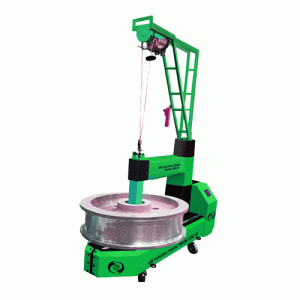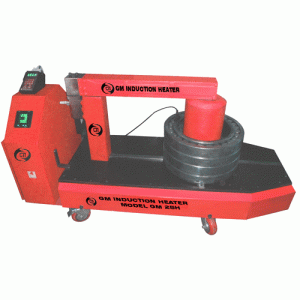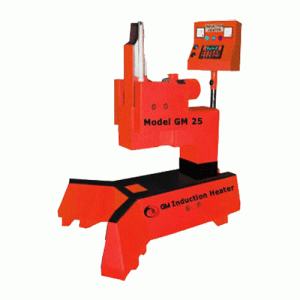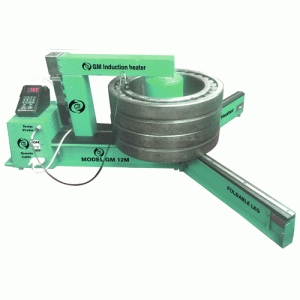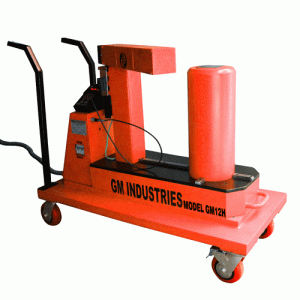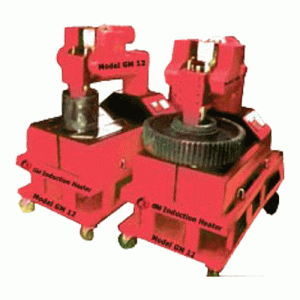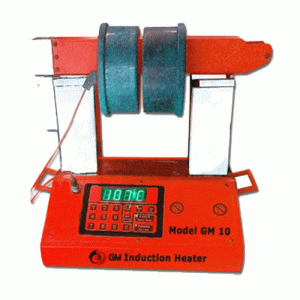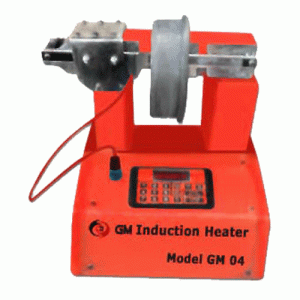induction rotor
Induction Heater for Dismounting of Rotors
A rotor is a rotating component of an electrical machine, such as an electric motor or generator. It typically consists of a shaft and a magnetic core, which can be wound with wire to create an electromagnet. Rotors are used in a wide range of industrial and consumer applications, such as pumps, fans, and power tools. When a rotor needs to be repaired or replaced, it often needs to be dismounted from its shaft. This can be a challenging task, especially if the rotor is large or has been in service for a long time. One effective way to dismount a rotor is to use an induction heater.
An induction heater is a device that uses electromagnetic induction to heat a metal object. By passing a high-frequency alternating current through a coil, the induction heater creates a magnetic field that induces eddy currents in the metal object. These eddy currents cause the metal to heat up rapidly, which can be used to melt or soften adhesives, loosen corroded fasteners, or expand a component so that it can be easily removed.
In the case of dismounting a rotor, an induction heater can be used to heat the metal shaft or hub that the rotor is attached to. This can help to break any rust or corrosion that may have formed between the rotor and the shaft, making it easier to separate the two components. The induction heater can also be used to heat the rotor itself, which can be useful if the rotor has been bonded to the shaft with an adhesive.
GM Industries offers Rotor induction heaters in various kilovolt-amperes, ranging from 40 KVA to 150 KVA which is a valuable tool for dismounting rotors and other metal components. By using the power of electromagnetic induction to heat the metal, an induction heater can help to make difficult repairs and maintenance tasks much easier and more efficient.
Types of Induction Heater used in Dismounting of Rotors
For more information on any of our high quality products or getting accurate prices contact GM Industries at
Call Us
+(91)-9820533489 / 7738562224
Enquiry Form
Submit
Features of Induction Heater for Dismounting of Rotors
The features of an induction heater used for dismounting rotors may vary depending on the specific model, but some common features include:
Power output
- Induction heaters for dismounting rotors typically have a high power output, ranging from a few kilowatts to several tens of kilowatts. This is necessary to generate the high-frequency electromagnetic field needed to heat the metal components.
Frequency range
- The frequency range of an induction heater can also vary, with some models capable of operating at frequencies ranging from a few hundred hertz to several megahertz. Higher frequencies are typically used for smaller components, while lower frequencies may be necessary for larger components.
Temperature control
- Induction heaters for dismounting rotors feature temperature control systems that allow the user to set and maintain a specific temperature range. This can be important to ensure that the metal components are heated to the proper temperature for effective dismounting without damaging them.
Coil design
- The design of the induction coil used in the heater can also impact its effectiveness for dismounting rotors. Some models may feature interchangeable or adjustable coils to accommodate different component sizes and shapes.
Safety features
Induction heaters can generate high levels of heat and electromagnetic fields, so safety features such as overheat protection, ground fault detection, and automatic shut-off can be important for preventing accidents.
Overall, an induction heater for dismounting rotors should be designed to provide high-power, high-frequency heating with temperature control and safety features to ensure effective and safe dismounting of the rotor from the shaft.
Advantages of Using Induction Heater for Dismounting of Rotors
There are several advantages of using an induction heater for dismounting rotors, including:
Fast and efficient heating
Induction heaters can rapidly heat the metal components, reducing dismounting time and increasing productivity. The heating is also precise and localized, allowing for targeted heating of specific areas.
Non-contact heating
v
Safe and clean
Induction heating does not produce any flames, sparks, or fumes, making it a safer and cleaner method than traditional heating methods. This can be important for industrial settings where safety and environmental concerns are a priority.
Versatility
Induction heaters can be used to heat a variety of metal components, including rotors of different sizes and shapes. They can also be used for other industrial applications such as brazing, soldering, and annealing.
Reduced maintenance costs
By using an induction heater for dismounting rotors, there is less risk of damage to the metal components, reducing the need for costly repairs or replacements. This can help to lower maintenance costs over time.
Precise temperature control
Induction heaters can provide precise temperature control, allowing for consistent heating and reducing the risk of overheating or under heating the metal components. This can help to ensure effective dismounting and prevent damage to the components.
Overall, using an induction heater for dismounting rotors can provide fast, efficient, safe, and precise heating with reduced maintenance costs and versatile applications.
Why Choose Us?
GM Industries is a company that specializes in the design and manufacturing of high-quality induction heating systems. We offer a wide range of industrial induction heaters that are suitable for mounting couplings and other metal components. With the expertise and experience in the industry, we can provide valuable advice and guidance on choosing the right induction heater for specific coupling applications. Our induction heaters are designed to provide fast and precise heating, ensuring a proper fit and improving overall system performance. By partnering with GM Industries for induction heating solutions, customers can be confident that they are receiving reliable and efficient products that meet their specific requirements.

